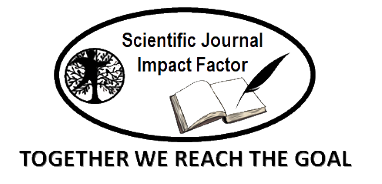نظرة على واقع الحوكمة المجتمعية في مصر المعوقات ومحاور الإصلاح
Keywords:
Societal governance, New public management, Public administration at EgyptAbstract
Along with the development of the contemporary society, the western public sector began to set off an upsurge of “new public administration”, which changed the paradigm of the field of public administration from “the new public management” to “the societal governance”. “The societal governance” as a new paradigm of public administration, provided not only a new research framework for theory research, but also a new mode of practice for the modern government of public affairs management. This article reviewed the content and characteristics contribution and problems, as well as the reference and revelation of “the societal governance” paradigm, and it had important reference value and significance especially for developing countries’ current reform of administrative system as Egypt, and building the theory system of public management and public administration.
References
أولاً: باللغة العربية
قانون الخدمة المدنية رقم 81 لسنة 2016 ولائحته التنفيذية.
قانون نظام الإدارة المحليـة رقم 43/1979، وتعديلاته 145/1988، 84/1996، والقوانين ذات الصلة كالقانون رقم 59 لسنة 1979 بشأن المجتمعات العمرانية الجديدة، واللوائح التنفيذية وتعديلاتها.
الإطار الإستراتيجى لخطط التنمية الإقتصادية والإجتماعية حتى 2022( مقترح لأغراض الحوار المجتمعى)، وزارة التخطيط والتعاون الدولى، جمهورية مصر العربية، نوفمبر2012.
حسين محمود حسن، دراسة تحليلية لأسباب الفساد فى مصر قبل ثورة 25 يناير: نحو رؤية مستقبلية لمنع ومكافحة الظاهرة، القاهرة: مركز العقد الإجتماعى، ديسمبر 2011 .
سمير عبد الوهاب، المجالس الشعبية والمجالس التنفيذية، مركز دراسات واستشارات الإدارة العامة، كلية الإقتصاد والعلوم السياسية، جامعة القاهرة، 2008.
صالح عبد الرحمن أحمد، ورقة عمل بناء قدرات الكوادر المحلية كمدخل لتعزيز اللامركزية ، وحدة تطوير الإدارة المحلية، وزارة التنمية المحلية،2011 .
عبدالرحمن توفيق، أفكار لكسر الإطار- حتى لا يبقى الحال على ما هو عليه، (القاهرة: مركز الخبرات المهنية للإدارة- بميك)، 2002.
علا محمد الخواجة، الفرص والتحديات أمام تطبيق نموذج الحكومةالإلكترونية فى مصر، جامعة القاهرة: كلية الإقتصاد والعلوم السياسية، مركز البحوث والدراسات الإقتصادية، سلسلة أوراق إقتصادية، العدد 35، ديسمبر2007.
محمد الراوى، تطوير الإدارة الحكومية فى مصر: مدخل سياسى، ورقة عمل مقدمة فى مؤتمر إصلاح الخدمة المدنية في مصر، القاهرة، 22- 23 يونيو2008.
هبة حندوسة وأخرون، التحديات التنموية الرئيسية: تحليل الموقف، وزارة التعاون الدولى، جمهورية مصر العربية،2010.
وائل عمران، دور الشراكة والتمكين المجتمعى فى تفعيل التنمية المحلية المستدامة فى مصر: إطار مقترح، المجلة العربية للإدارة، إصدار خاص مُحكَم، يناير 2014.
وائل عمران على، بناء القدرات المجتمعية كآلية للتدخل الإستراتيجى الداعم لتحقيق العدالة الإجتماعية والحوكمة المجتمعية مع إشارة خاصة إلى الحالة المصرية، مجلة الإدارة العربية، عدد 38، سبتمبر 2018.
وزارة الدولة للتنمية الإدارية، مصر: الإصلاح الإدارى، فبراير 2004. متاح على الرابط التالي:
www.edara.gov.eg
ثانياً: باللغة الإنجليزية
Agranoff, R., & McGuire, M. (1999). Managing in network settings. Policy Studies Review, 16(1).
Agranoff, Robert, and McGuire, Michael. )2001(. “Big Questions in Public Network Management Research.” Journal of Public Administration Research and Theory 11(3).
Agranoff, Robert, and McGuire, Michael. (2003). Collaborative Public Management: New Strategies for Local Governments. Washington, D.C.: Georgetown University Press.
Ansell, C., & Gash, A. (2008). Collaborative governance in theory and practice. Journal of Public Administration Research and Theory, 18.
Crosby, B. C. and J. Bryson. (2010). Integrative leadership and the creation and maintenance of cross-sector collaboration. The Leadership Quarterly, 21(2).
Denhardt, Janet V., and Robert B. Denhardt. (2003). The New Public Service: Serving, Not Steering. Armonk, N.Y.: M. E. Sharpe.
Economic and Social Commission of United Nations. (2010).What is good governance? Retrieved 23/7/2019 from: http://www.unescap.org/pdd/prs/ProjectActivities/Ongoing/gg/governance.asp
Emad Abu Shanab, Issa Shehabat (2016), A Framework for Implementing Knowledge Management in E-Government, The 15th Scientific Annual International Conference for Business Sustainability and Competitiveness in Business AL-Zaytoonah University of Jordan, 18 – 20 April.
Friedman, Thomas L. (2005). The World Is Flat: A Brief History of the Twenty-First Century. New York: Farrar, Straus and Giroux.
Hartley, J. (2005). Innovation in governance and public service: past and present. Public Money and Management, 25(1).
Jing, Y., & Chen, B. (2012). Is competitive contracting really competitive? Exploring government– nonprofit collaboration in China. International Public Management Journal, 15.
Jun Yi Hsieh1 and Kuotsai Tom Liou (2016), Collaborative Leadership and Organizational Performance: Assessing the Structural Relation in a Public Service Agency, Review of Public Personnel Administration.
Khan, M. (2013), E-government, GIS and good governance, Public management, 95(1).
Klijn, E. (1996). Analyzing and managing policy processes in complex networks. Administration & Society, 28.
Lee, E. W. Y., & Liu, H. K. (2012). Factors influencing network formation among Social Service Nonprofit Organizations in Hong Kong and implications for comparative and China studies. International Public Management Journal, 15.
Linden, Russell M. 2002. Working across Boundaries: Making Collaboration Work in Government and Nonprofit Organizations. San Francisco: Jossey-Bass.
Mandell, M. P. (1990). Network management: Strategic behavior in the public sector. In R. W.Gage & M. P. Mandell (Eds.), Strategies for managing intergovernmental policies. New York, NY: Praeger.
McGuire, M. (2002). Managing networks: Propositions on what managers do and why they do it. Public Administration Review, 62.
McGuire, M., & Silvia, C. (2009). Does leadership in networks matter? Examining the effect of leadership behaviors on managers’ perceptions of network effectiveness. Public Performance & Management Review, 33.
Morse, R. (2010). Integrative public leadership: Catalyzing collaboration to create public value. The Leadership Quarterly, 21(2).
Newman, J., J. Raine and C. Skelcher. (2001). Transforming local government: Innovation and modernization. Public Money and Management, 21(2).
O’Toole, L. J. (1997). Implementing public innovations in network settings. Administration & Society, 29.
Omran, W. (2013), Bad Governance and Failure of Development Progress in Egypt: Causes, Consequences and Remedies. Journal of Public Administration and Governance, 3(4).
Osborne, S. P. (ed.). (2010). The New Public Governance. London: Routledge.
Osborne, S. P. (2006). The new public governance? Public Management Review, 8(3).
Osborne, D. & Gaebler (1993), T., Reinventing Government, New York: Plume books.
Page, S. (2010). Integrative leadership for collaborative governance: Civic engagement in Seattle. The Leadership Quarterly, 21(2).
Scott, C. (2011). A case study of collaborative governance: Health care law reform in Georgia. Conflict Resolution Quarterly, 28(4).
Sorensen, E., and J. Torfing. (2011). Enhancing collaborative innovation in the public sector. Administration and Society, 43(8).
Stephen P. O. (2009). The new public governance. Routledge Press.
Straus, D. (2002). How to Make Collaboration Work. San Francisco: Berrett Koehler Publishers.
Terry, L. D. (2003). Leadership of public bureaucracies: The administrator as conservator. Armonk, NY: M. E. Sharpe.
Torfing, J., B. G. Peters, J. Pierre, and E. Sørensen. (2012). Interactive Governance: Advancing the Paradigm. Oxford: Oxford University Press.
UNDP Summary Profile (1997), Community Development Program of UNCHS (Habitat).
Vangen, S., & Huxham, C. (2003). Enacting leadership for collaborative advantage: Dilemmas of ideology and pragmatism in the activities of partnership managers. British Journal of Management, 14.
Walker, R. M., & Hills, P. (2012). Partnership characteristics, network behavior, and publicness: Evidence on the performance of sustainable development projects, International Public Management Journal, 15.
XU Runya; SUN Qigui; SI Wei (2015), the Third Wave of Public Administration: The New Public Governance, Canadian Social Science, Vol. 11, No. 7.



























